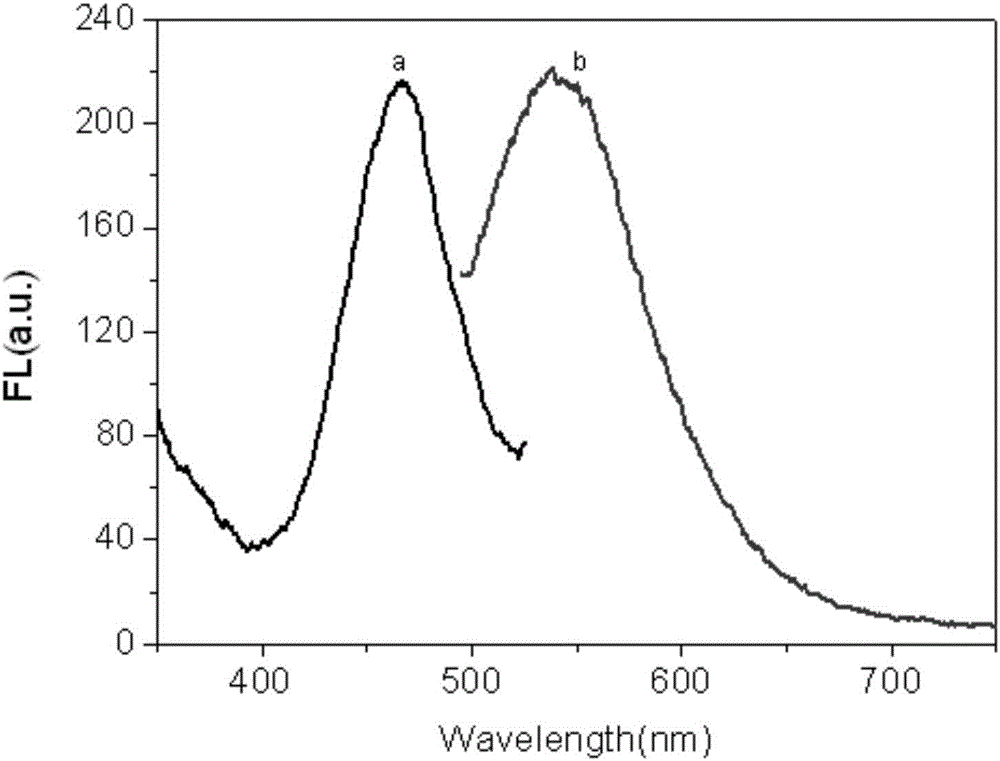Method for fluorescence detection of Alzheimer's disease markers based on silver nano-cluster probe containing repeated AGGGTT sequences
A silver nanocluster and fluorescence detection technology, which is applied in fluorescence/phosphorescence, material excitation analysis, etc., can solve the problems of sensitivity and detection concentration range to be improved
- Summary
- Abstract
- Description
- Claims
- Application Information
AI Technical Summary
Problems solved by technology
Method used
Image
Examples
Embodiment 1
[0054] dna 1 -AgNCs preparation method, the steps are as follows:
[0055] Take 15 μL of DNA 1 (100μM) mixed with 73uL phosphate buffer (20mM, pH 6.5), add 6μL AgNO 3 Shake and mix the aqueous solution (1.5mM) at room temperature for 15min, then add 6μL freshly prepared NaBH 4 (1.5mM) mixed quickly and transferred to a constant temperature water bath at 25°C to react for 2h, then its fluorescence can be detected.
[0056] dna 1 / DNA 2 -AgNCs reaction steps are as follows:
[0057] Take 5 μL DNA 2 (100μM) with 50μL DNA 1 -AgNCs solution was mixed and reacted in a constant temperature water bath at 25°C for 1 hour to detect its fluorescence signal.
[0058] dna 1 / DNA 2 -AgNCs-Cu 2+ Probe preparation steps are as follows:
[0059] Add 6uL copper nitrate (0.156mM) to the reacted DNA 1 / DNA 2 -AgNCs solution (55 μL) was mixed and reacted in a constant temperature water bath at 25° C. for 0.5 h to detect its fluorescence signal.
[0060] Aβ 1-40 The steps to establi...
PUM
 Login to View More
Login to View More Abstract
Description
Claims
Application Information
 Login to View More
Login to View More - R&D
- Intellectual Property
- Life Sciences
- Materials
- Tech Scout
- Unparalleled Data Quality
- Higher Quality Content
- 60% Fewer Hallucinations
Browse by: Latest US Patents, China's latest patents, Technical Efficacy Thesaurus, Application Domain, Technology Topic, Popular Technical Reports.
© 2025 PatSnap. All rights reserved.Legal|Privacy policy|Modern Slavery Act Transparency Statement|Sitemap|About US| Contact US: help@patsnap.com



